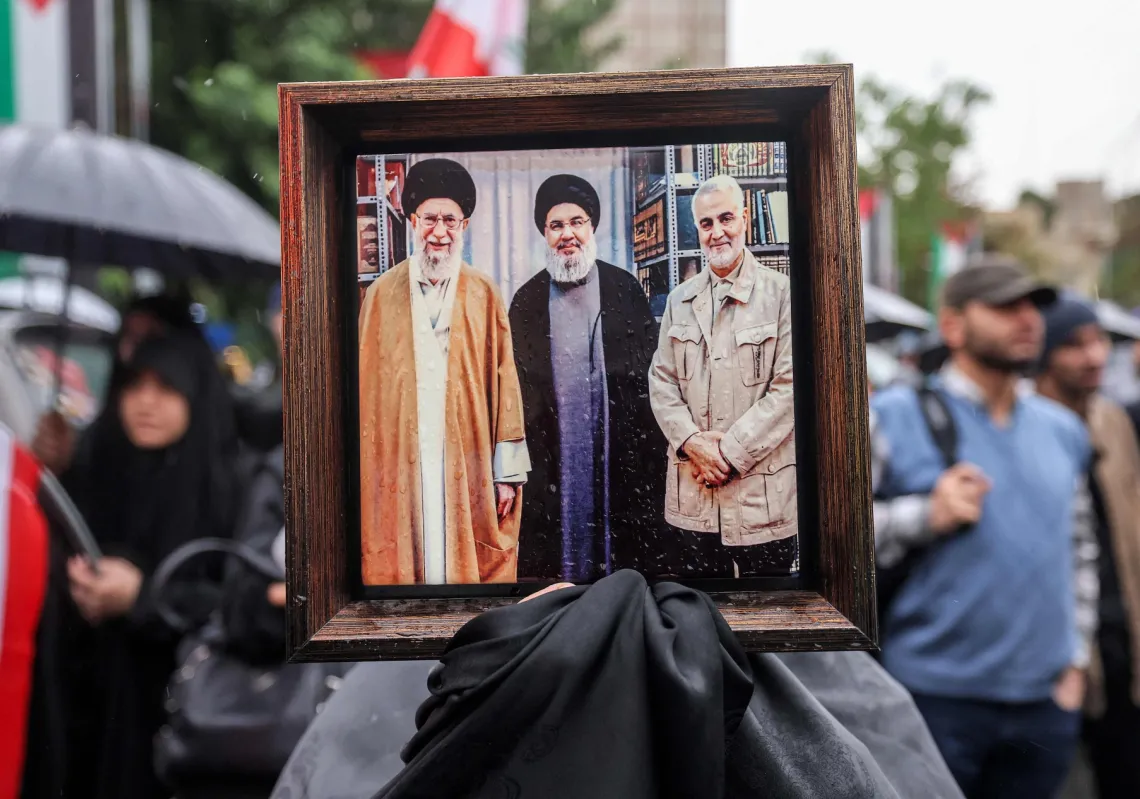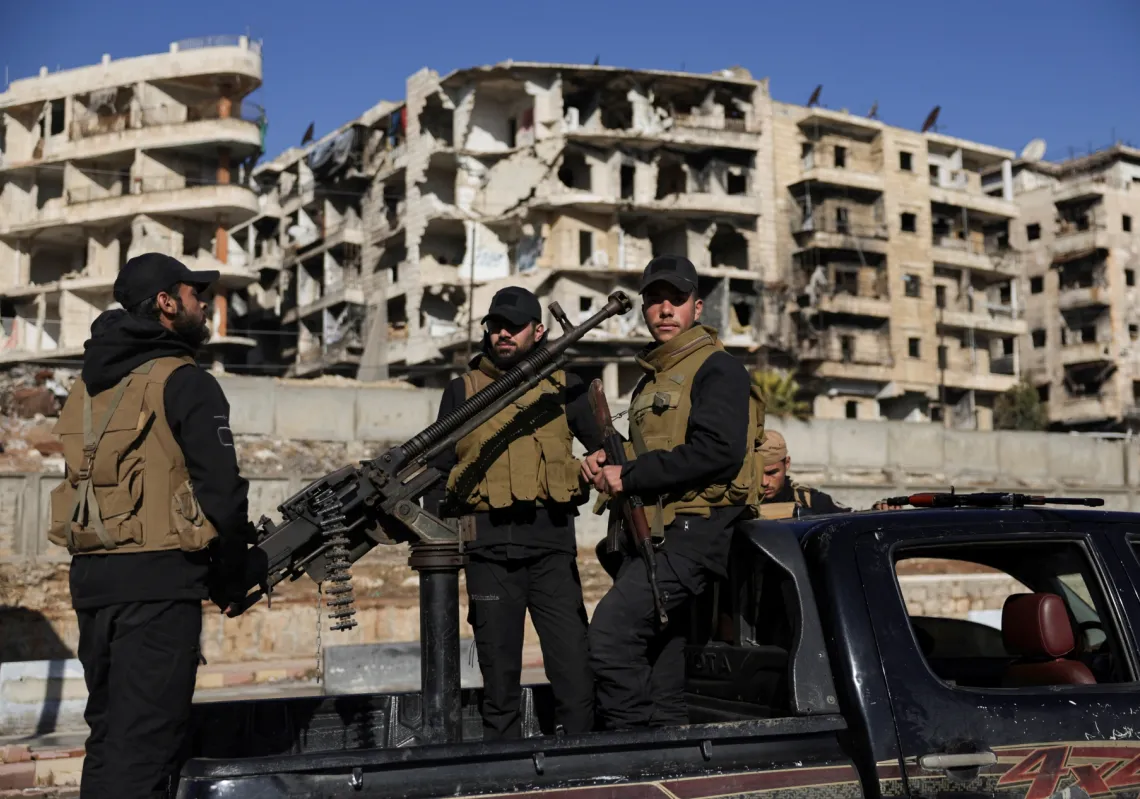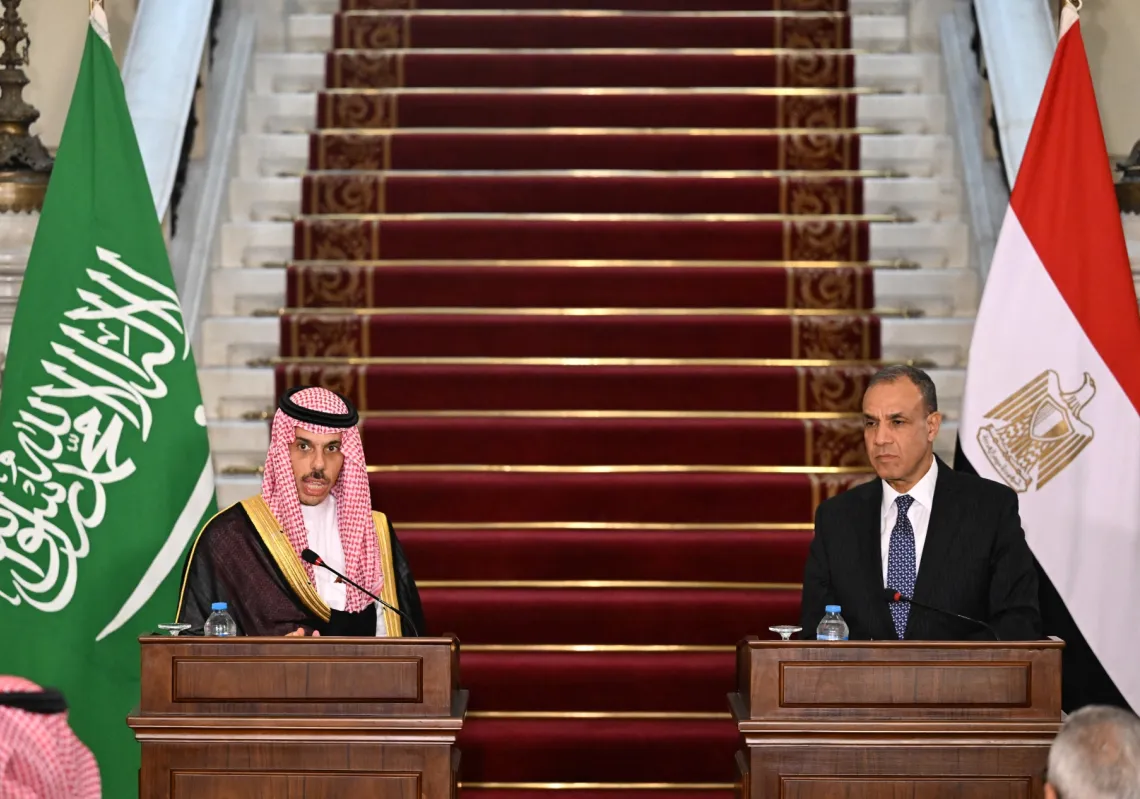Beirut's southern suburb has hardly been out of the headlines in recent weeks, as Israel’s armed forces pound the population centre in their war against Hezbollah. The symbolic capital of Lebanon’s large Shiite community, Dahiyeh (literally, ‘the suburb’), was not originally a marginalised area at the capital’s southern entrance, nor was that its official name in Lebanese records.
Dahiyeh was historically a collection of towns, orchards, and irrigation canals, each with its own distinct name, identity, and social context. It only took on its current name and characteristics in the mid-1970s.
Geographically part of the southern Metn coastal region, administratively part of Baabda district, Dahiyeh became a refuge for those fleeing the Lebanese Civil War that raged from 1975-90, as Beirut was split into East and West.
'Little Tehran'
It became home to Lebanese from the south, fleeing Israeli assaults, and from the Bekaa region in the east, who moved there for economic reasons. At the time, it was Beirut’s green lung—a place where people could seek fresh air and recreation. It was also a diverse community marked by sectarian coexistence and political pluralism. However, as Lebanon’s Shiite population adopted it as their demographic stronghold, it became a centre of ideological and political influence.
In the early 1980s, the Amal Movement controlled Dahiyeh, yet by the end of the decade, Hezbollah had ousted its Shiite peer in a local turf war known to some as the ‘War of Brothers.’ From that point on, Dahiyeh evolved into a political, social, cultural, and religious extension of Iran within Lebanon, gradually losing its original character and identity.

After Lebanon’s Prime Minister Rafic Hariri was assassinated, the Shiite duo consolidated power. The Amal Movement re-entered Dahiyeh institutional life, although Hezbollah still kept ultimate control. The Amal Movement refers to Dahiyeh as ‘the fiery suburb,’ while Hezbollah calls it the ‘suburb of pride and dignity.’ When both parties criticise the state’s uneven development policies, they label it ‘the victimised suburb’.
A scene of sorrow
Today, with so much of it in ruins, Dahiyeh can justifiably claim to be the victim of circumstance and fortune, caught in the middle of a titanic struggle for regional control whose end remains uncertain.
Enter Dahiyeh today after heavy bombing displaced residents and erased so many landmarks, and few grasp the magnitude of the disaster. The scene is both sorrowful and terrifying. The streets are eerily empty, devoid of life. Most compare it to the ruins of the Gaza Strip, which, like Dahiyeh, seems isolated and vulnerable to Israeli pounding, bearing the brunt of Tel Aviv’s aggression all on its own, as those who stay count the cost of war in wreckage and bodies.
No government agency has taken responsibility for tracking the displaced, the remaining residents, or the material damage caused by the Israelis, partly because Hezbollah have long been the de facto rulers of Dahiyeh, and they no longer have the capacity or resources to act.
Some streets are impassable, blocked by rubble and fallen building debris. Those that are largely still intact have a haunted look, as if wondering whether they will be next. From the entrance leading to the Burj camp, where Hezbollah's Secretary-General Hassan Nasrallah was assassinated, crossing is impossible.

Hezbollah's security forces have established a strict cordon around the area, and the destruction caused by the violent raids has left deep craters and collapsed buildings, posing an immediate danger to anyone who might venture through. Not far from the entrance, it is possible to travel in the direction of the Supreme Shiite Council headquarters, to the building where Hezbollah commander and Jihadi Council leader Fouad Shukr was killed.
Turn left and the road leads toward Ghobeiry, where another Hezbollah leader, Ibrahim Qubaisi, was targeted. From here, the roads lead to Al-Ruwais, Bir Al-Abed, Al-Hay Al-Abyad, Al-Jamous, and the Al-American neighbourhood. In these areas, the devastation is overwhelming, with mounds of rubble, gaping craters, and charred remnants of homes. Buildings that once stood tall have been reduced to memories, livelihoods scattered like ashes.
The air is thick with foul smells and rising clouds of smoke, likewise in Moawad and Shiyah, where Israeli missiles assassinated Sheikh Nabil Qawuq, the deputy head of Hezbollah's executive council, bringing a residential building down on its inhabitants.
From St. Therese and Hadath, Choueifat, and Amrousieh, all the way down to Salam and the Lebanese University, the only sights are those of destruction and ruin, with piles of concrete dust and smoke darkening the sky, as stray dogs and cats search for food and water in the wreckage.
Comparisons to 2006
This is the second time Dahiyeh has suffered destruction of this magnitude. In the summer of 2006, the devastation was indiscriminate. For 33 days, Israeli warplanes bombed entire neighbourhoods, homes, and institutions.
Prior to the 2006 assault, there was an area known as the 'security square'—a zone where Hezbollah leaders, members, and clerics lived and which housed their institutions and social organisations. This was completely levelled. The city's infrastructure also suffered severe damage.

This time, the destruction is more systematic and targeted. The missiles are more lethal and precise. The buildings that Israel is targeting are well-known to everyone in the suburb. Locals can easily point them out.
Yet Israel is not confining this war to Hezbollah. Over the past two weeks, the Israelis have erased many landmarks in Dahiyeh, leaving hundreds of civilians dead.
People ask if this is a war of extermination, like Gaza. If the pace and scale of bombing continues, it soon will be. Locals use the word 'nakba' ('catastrophe') to describe it.
"This is a second Nakba," one resident lamented, referring to 2006 as the first. "Eighteen years separate these two disasters. During this time the suburb expanded and grew, so the scale of the Nakba today will be even greater."
In 2006, Israel issued no warnings or evacuation orders before targeting the entire suburb indiscriminately. This led to the mass evacuation of Dahiyeh's residents. It was only the speed of this that helped minimise loss of human life.
Ripped up rulebook
In the early days of the current fighting, Hezbollah and Israel appeared to limit their engagement to a 5-7km buffer zone along Lebanon's southern border, but Israel soon expanded its operations and disregarded those boundaries. The escalation began with the assassination of Hamas leader Saleh al-Arouri, targeted by a precision missile that avoided civilian casualties. This marked the beginning of a broader campaign, where any Hezbollah member's home became a target.
Soon, Israel's air force treats Dahiyeh as an array of military targets, strafing buildings and streets without distinction. As tonnes of ordnance rain down, Israeli leaders say they are targeting underground Hezbollah facilities. Mornings can consist of more than a dozen air raids from dawn, with more than half a dozen more in the afternoon.

To look upon Dahiyeh is to look upon a burning mass, enveloped in giant clouds of black smoke. The suburb echoes to the sound of raids, deafening explosions, and the constant hum of reconnaissance drones that never leave the skies, day or night.
As the shelling got heavier, I went to Ghobeiry Square in Dahiyeh with a woman displaced from Nabatieh in southern Lebanon, accompanying her to her daughter's house. Rather than take the shorter route via the airport bridge, I went through the inner streets of the suburb, in part to inspect the damage.
At first, the effects of displacement were not on show—many have chosen to stay and refused to flee. Cars and motorbikes still caused congestion, shops still had their doors open, and mobile vegetable carts still made their rounds.
In ways, it felt quite ordinary. It soon turned into an unforgettable nightmare, however, after Israeli aircraft levelled a residential building, killing many residents. Similar tragedies would follow in the coming days.
Like Gaza, Dahiyeh stands alone on the front-line, the blood and tears of its people inking its next chapter.















